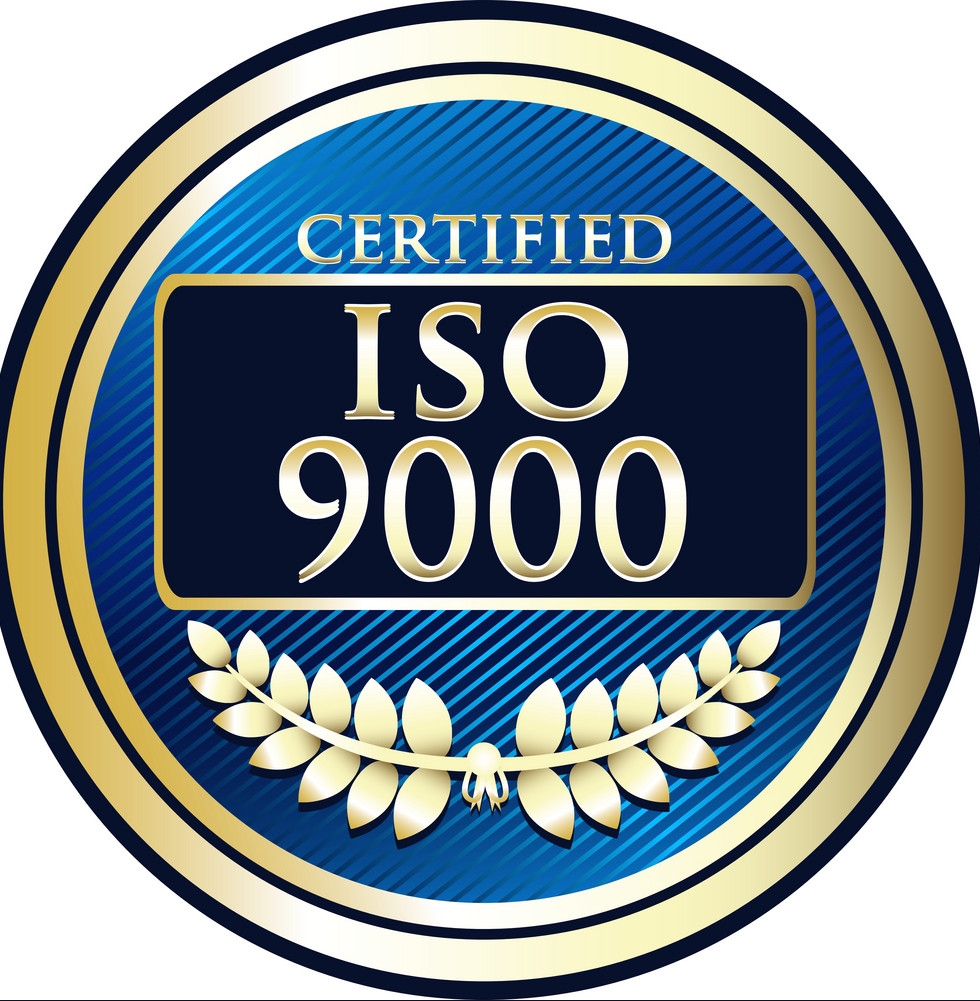ISO 9001 Guide: Benefits, Procedure, Cost, Certification
ISO 9001 Certification
ISO 9001 certification specifies the quality management system (QMS). It is one of the ISO certification families whose first edition was published in 1987 and now the latest version was made in the year 2015. Large as well as small companies can also use it no matter in what field it is related to. There are over 1 million companies and organizations that are certified to this ISO in 170 countries. Mostly it is based on quality management principles including a strong motivation, customer focus, and implication of top management, continual improvement, process approach. A customer can get consistent, good quality products and services by using ISO 9001:2015 which in turn brings many business benefits.ISO 9001 standards to specific sectors and industries
- ISO 13485 – Medical devices
- ISO 17582 – Electoral organizations at all levels of government
- ISO 18091 – Local government
- ISO/TS 22163 – Business management system requirements for rail organizations
- ISO/TS 29001 – Petroleum, petrochemical and natural gas industries
- ISO/IEC 90003 – Software engineering
Benefits of ISO 9001 Certification
As ISO certification is useful for both large as well as small companies, the benefits are divided into two categories:- For organization
- For Customer
- It provides senior management.
- Compulsory when you want to tender for some public sector works.
- Sets out areas of responsibility across the organization.
- Encourages more efficiently
- Time-saving process
- Communicate positively with staff and customers.
- Reduces your costs
- It highlights all deficiencies
- It provides improvement and continuous assessment
- Plenty of opportunities to avail for marketing
- It improves quality and services
- Right-first-time attitude
- Always on time delivery
- Fewer complaints and less returned products
- Independent audit demonstrates a commitment to quality.
ISO 9001 Certification Procedure
The procedure of ISO 9001 has been described into 5 steps:STEP 1. PREPARATION
- ISO 9001 basically focuses on the large variety of business activities not specifically on quality control. So, before having this ISO implemented, it is important to understand the requirements of it as well as the implementation steps. For any query, you can go through our website: Legal Raasta and read the description of different types of ISO standards. Our experts are available here to help you.
- Then appoint the “ISO 9001 Management Representative”. He would be the quality manager or another member of top management of your company but it should be somebody in the office who has sufficient authority to change operational processes. Because this person will be responsible for implementing ISO 9001 processes.
- ISO 9001:2015 it the new version that focuses on Training and awareness programs. Proper knowledge of anything makes the tasks easier, smoother and faster. The candidate for ISO 9001 training is the Management Representative who at this point, maybe still wondering how to proceed in order to get ISO certification.
- It is relevant to get full support from the top level management, middle-level managers and employees for the success of your ISO 9001 quality management system. Firstly, make sure that whether the company employees are in support of the ISO 9001 effort or not. If in case not, then try to explain to them the benefits of ISO 9001 certification both for the organization and from the point of view of customer also. Afterward, inform all the managers and employees about the plan for ISO 9001 and how to get ISO 9001 certification, the benefits to them and their work, and the expectations regarding their cooperation. Try to gain the manager and employee buy-in in form of department meetings.
- Although Project planning is very crucial before jumping into the actual ISO 9001 implementation project, only a good project guide will simplify your project plan that clearly describes all implementation steps.
STEP 2. DOCUMENTATION
- Quality policy
- Procedures
- The scope of the quality management system
- Process map (flowchart)
- Quality objectives
- Work instructions
- Forms
You can prepare checklists to save your time and efforts in meeting ISO requirements. There is some company's specific documentation that is not a generic set of documents which can simply be exchanged among companies. These are:
- specific to your company
- suitable for your company
ISO 9001 certification documentation includes everything from the overall policy to detailed work instructions including specifics of your company and its operational processes. It should be noted that the documents do not contain bureaucratic requirements which are not suitable for your company’s circumstances or requirements that cause obstacles to your business operations and productivity.
STEP 3. IMPLEMENTATION
Now, implement your ISO 9001 quality management system throughout your company. Remember your customized ISO 9001 Quality management Manual often affect employees and you have to help them adjust their ways of working. Your one time step at a time in ISO 9001 implementation process can prove very beneficial to you. We then recommend you to start with the section on Document control. Moreover, all the requirements should be in a meeting or memo or have the appropriate department managers explain to their staff. The requisite document control is not complicated and their benefits are obvious as with our other ISO procedures to make the implementation an easy and rewarding experience. Besides, the Training and work instructions must go hand in hand. All employees have to change the way they work at least to some extent as you implement your quality management system. So, the quality management manual points out where work instructions are required if your new ISO 9001 includes requirements that call for a change in work processes.STEP 4. INTERNAL AUDIT
ISO 9001 Internal Audits are inspections in which your company evaluates itself to see if all the requirements are being followed. Not only this, but these internal audits are conducted periodically after achieving ISO 9001 certification. The job of the internal auditor is to verify that your company meets the requirements of ISO as they are described in the procedures of your ISO Quality management manual.
- The Auditor: Except for his/her own work, the management representative audits the entire company, and another employee audits the work of the management representative. Learning auditing skills and performing internal audits is not difficult with our training and with our audit checklist.
- Audits as a training tool: Most importantly, you do not have to conduct your internal audit in one single event despite you can divide an internal audit into many partial audits. For example, you can only audit a single department or a single requirement at a time. Once your entire company has been audited against all ISO quality management system requirements as well as the internal auditor has not uncovered any significant problems then your company will be ready for the ISO 9001: 2015 certification audit.
STEP 5. CERTIFICATION
It will be necessary to have an independent, third-party ISO auditor visit your company in order to get done the procedure of final certification and perform a site audit. Given below are the steps for final certification od ISO quality management system:- Selection of ISO 9001 registrar: Many companies who offer certification services so please be careful, out of them some are not officially accredited by an ISO 9000 certification body. Ask us for a referral, get start your search on the internet and compare the different registrars. Side by side it also includes tools to help you select a registrar that’s ideal for your company’s individual circumstances.
- The ISO 9001 certification Audit: Many questions and requirements are there that most of the auditors focus on during the ISO 9001:2015 site audit. Compiled a list of audit preparation tips, which are included with the ISO 9001 Certification package to prepare the best. There is the second method of preparing staff for the site audit is by showing a short awareness video like “How to tackle external auditors”.
- Reaping the marketing benefits: Once you passed from the certification of ISO 9001 Audit, you must leverage your new ISO 9001 registration in marketing. You can do anything like send notification cards, preparing a press release to the customers, print your certification mark on business cards and letterhead, add your ISO registration mark to your advertisement, display a banner outside the building/office and at last, recognize your employees for the hard work they put into this effort.
- Maintaining certification: Obviously, it is not a one-time event. The ISO registrar will perform a surveillance site once or twice a year in order to verify continued ISO compliance and even improvement of your ISO Quality management system. First, make sure whether your ISO process is remain implemented or not. In addition, it has been continued your internal audits and all are convinced you will see your company’s performance improvements at the bottom line.
Cost of ISO 9001 Certification
ISO 9001 will be for Rs. 6039 with our Company and it will take 3 working to get certified.What will be the validity of ISO 9001 certification?
The Certification is valid up to 3 years and in the period of 3 years, the company will be subjected to mandatory audits to ensure compliance with the regulations.
Related Articles: ISO 9000 GUIDE Procedure of ISO certification ISO 22000 certification










